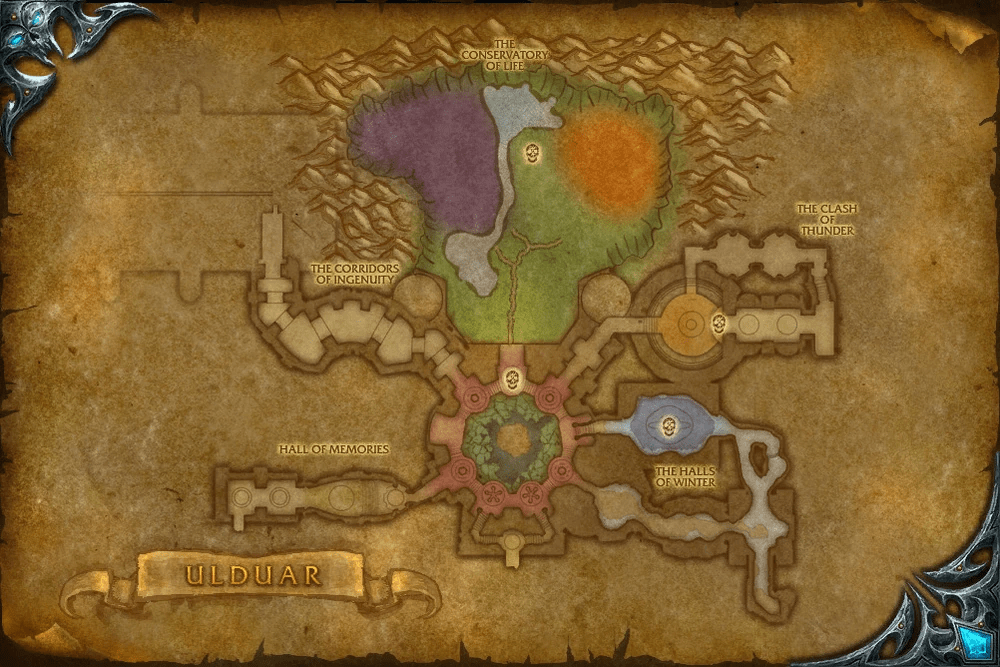Rising from the frozen expanse of Northrend, Ulduar stands as a monument to the vision and ambition of the titans. Constructed by the Keepers as both a bastion and a laboratory, it was entrusted with the monumental task of imprisoning Yogg-Saron, the Old God whose blackened influence had seeped through Azeroth long before mortals walked its surface. Its walls, carved from living stone and reinforced with ancient titan-forged steel, carry the weight of countless millennia, their corridors steeped in both vigilance and invention. Ulduar was never a simple prison; within its colossal halls, the Keepers explored the boundaries of life itself, shaping constructs and imbuing the land with both vitality and mystery. And we get to see how it’s tied to a lot of the important stuff happening throughout time.
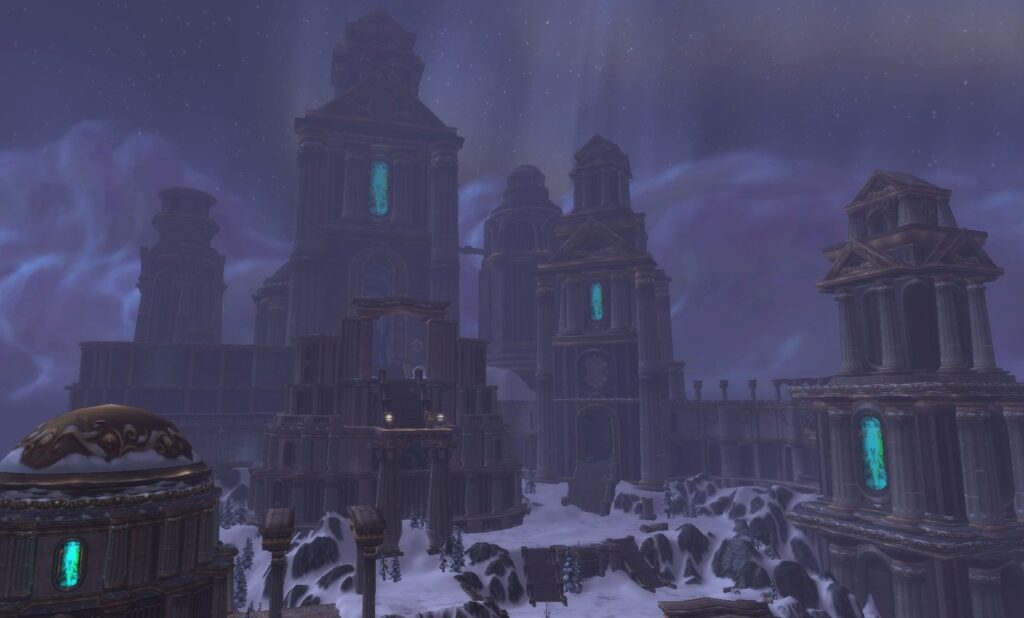
Early History of Ulduar
Before the influence of a force greater than the inhabitants and rulers of Ulduar, with the defeat of the mighty and terrible Galakrond by the hands of proto-dragons, the Keepers sought to honor them as defenders of Azeroth. Odyn, Prime Designate and ruler among the Keepers, resisted this path, and being distrustful of the proto-dragons’ loyalty, he envisioned an army of unwavering courage and discipline, choosing the vrykul, titan-forged progeny of immense strength, to fill its ranks. The other Keepers opposed his ambitions, but Odyn remained resolute in this thought. Within Ulduar, he claimed a section of the halls and, with the aid of the titan-forged sorceress Helya, elevated it into the misty heavens, creating the Halls of Valor. There, the greatest of the vrykul were called to serve Odyn, their eternal reward a life among the stars, honored for their courage and worthiness.
After many years, and even as Ulduar fulfilled the role of being a prison well, it was inevitably tainted. The Old God Yogg-Saron’s blood spread throughout the lands of Northrend, transforming into saronite that corrupted everything it came into contact with. The Old God’s whispers seeped from the prison, twisting minds and sowing madness, ensnaring even the mighty, including Ulduar’s very own Keeper Loken. Over the course of millennia, Yogg-Saron’s chains weakened, and the Old God’s influence grew stronger. Loken, now tainted with corrupted ideas, seized the opportunity, taking control of Ulduar, creating iron dwarves and iron vrykul within the Forge of Wills, and driving out the remaining earthen and mechagnomes. From these halls, his creations spread throughout Northrend, leaving ruin in their wake.
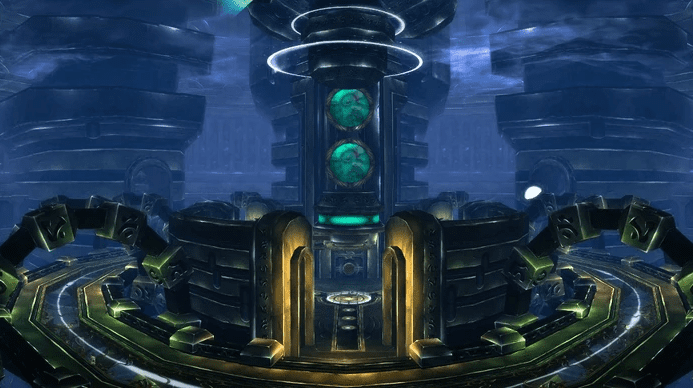
Height of Its Significance, and the Battle That Ensued
During these dark years, the war against the Lich King unfolded. Thorim, Keeper of Storms, discovered that his wife Sif had been slain by the Keeper Loken’s betrayal. With the aid of adventurers allied to the Sons of Hodir, Thorim sought vengeance, only to be lured into a trap that left him and his proto-drake, Veranus, in Ulduar’s grasp. There, under the shadow of the Old God, he teetered on the brink of madness. Ultimately, only the combined efforts of Alliance and Horde adventurers, guided by the dwarven scholar Brann Bronzebeard, brought Loken’s treachery to an end and thwarted the Old God Yogg-Saron’s schemes. Yet even in victory, Ulduar wore the scars of corruption, its forges and halls retaining the memory of chaos.
In the years that followed, Ulduar became a place of study and preservation. Scholars such as Orik Trueheart explored its depths, learning from the Keeper Tyr and examining vrykul sagas that described powerful artifacts and shields crafted to inspire and protect the greatest warriors. The scattered Alliance and Horde camps that had once dotted the tundra were consolidated into Copperpot Camp, a modest outpost overseen by the human Chester Copperpot and his guards, with a meeting stone marking the beginning of expeditions into the ancient halls.
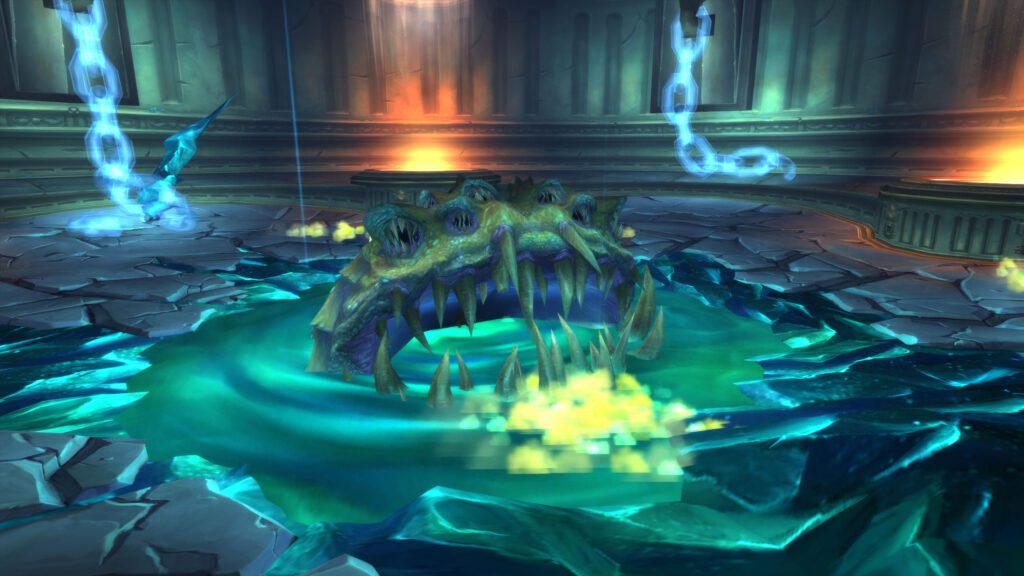
The Continuation of Its Legacy, and the Hardships Endured
By the third invasion of the Burning Legion, Ulduar had been largely cleansed of corruption. Earthen and mechagnomes resumed command, integrating iron dwarves, iron vrykul, and frost giants into the facility’s defensive systems. Visitor protocols were maintained, with representatives ensuring safe passage and curators monitoring restricted areas. Even in these ordered times, however, echoes of Yogg-Saron’s whispers persisted, and groups of faceless ones, the N’raqi has returned, testing the vigilance of those guarding the titan-forged halls.
Ulduar’s fortifications were tested repeatedly. Demons sought knowledge of the Pillars of Creation within its vaults, while the Legion attempted to capture Hodir, only to be repelled by the Valarjar, Odyn’s celestial warriors. Time itself proved precarious; an unknown entity tampered with the titan locks restraining Yogg-Saron, releasing the Old God far earlier than intended, an event the bronze dragonflight’s Vormu failed to prevent. Yet even through these trials, the Keepers endured, preserving Ulduar as a sanctuary and bulwark against threats to Azeroth.
During the Fourth War, the facility remained under restoration. Brann Bronzebeard and a dwarf adventurer sought Ignis the Furnace Master, revived by the Keepers, to reforge armor and maintain the forges that had long defined Ulduar. The war against the Jailer left further traces of conflict, but the earthen and mechagnomes steadily rebuilt the halls, welcoming freed iron dwarves into their ranks. Though Yogg-Saron’s body remained imprisoned, and his influence largely contained, his whispers lingered in Northrend and throughout Ulduar, reminders that even a defeated Old God left a permanent mark.
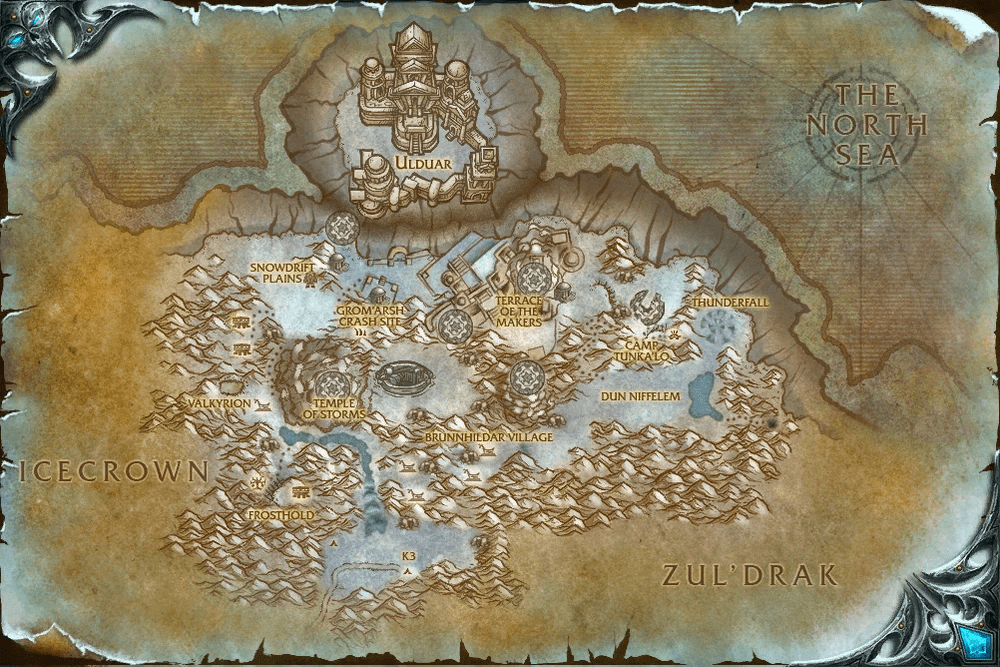
Personal Thoughts on Ulduar
Nowadays, Ulduar stands as more than a fortress; it is a testament to titan ambition, the resilience of the earthen, and the enduring vigilance of those who guard Azeroth. Its halls tell stories of betrayal, heroism, and the ceaseless struggle against corruption. From the cloud-wreathed Halls of Valor to the shadowed chambers housing saronite and steel, Ulduar is a living chronicle. Adventurers walking its corridors traverse the legacy of millennia, guided by the deeds of Keepers, vrykul, and dwarves alike. Each chamber, forge, and hall preserves the echoes of those who shaped its history, ensuring that Ulduar remains both a sanctuary and a reminder of the fragile balance between creation, power, and the shadows that threaten to consume it.
